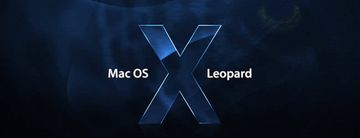Read previous part: OS X Anti-Forensics Techniques 2 - Assaulting OS X
The final part of the Grugq’s HIRBSecConf presentation includes an outline and description of more attack vectors, and a Questions and Answers section.
When Unicode Attacks
So, let’s look at something else. We’re going to look at how we can use Unicode; there’re Unicode bugs that we can exploit, and we can actually do data storage inside Unicode strings. Everyone’s very excited by this, I can tell.
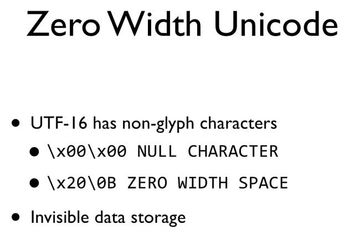
Now we can do data storage by converting our bytes into chunks of Unicode characters. So we actually now have a way of converting a stream of bytes into a stream of zero width Unicode characters. How awesome is that? Very awesome! The cool thing about this is that mostly what happens is UTF-16 gets converted to UTF-8 on the way back, so it will be read up as UTF-16 off the disk and it will get converted to UTF-8 to be displayed on a screen. And the awesome thing is the way that the null character over here gets converted into UTF-8 is it becomes a null terminator, which means your null character actually terminates your UTF-8 string, which means all of the rest of the data is now invisible, completely. It vanishes in the conversion process itself. So you can actually hide data in a file system by converting your data to invisible UTF-16 characters, appending them to filenames, so you’ll have a filename that’s, like, 2 characters plus 200 characters of UTF-16 data.
When the forensics investigator comes by trying to look at where all the stuff is, he will read up the filename, convert it to UTF-8 which strips out all of your data, and then start looking inside the contents of that file for your data, when his tool has already basically erased the data for you. So it’s data that will get printed to the screen; it’s incredibly ironic. The data he is looking for is displayed directly in front of him, but it’s invisibly displayed.
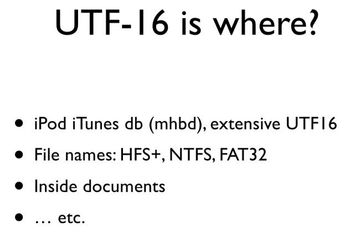
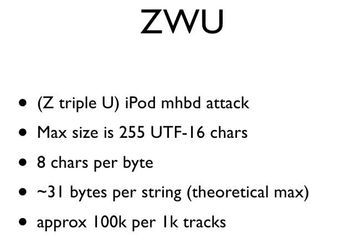
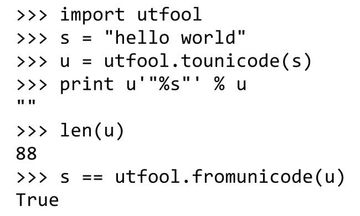
Application File Formats
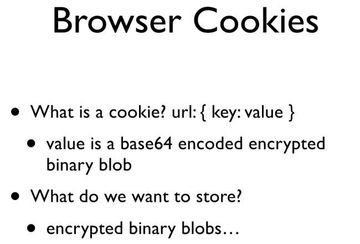
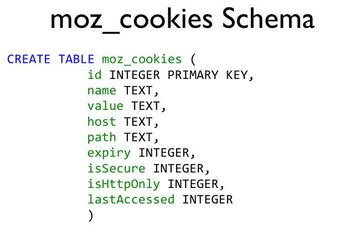
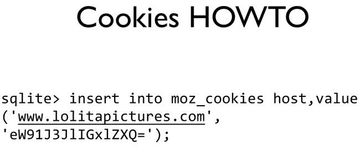
One of the other things that you can do is you can take the Mozilla cookies file and you can create your own table, and then you can do your data storage directly in that table. So you can create table “my hidden secret data” with a text value and then put your stuff in there. When a forensics tool comes along, what they’re going to do is they’re going to open it up, they’re going to go to the Moz cookies table and dump all of the data out of the Moz cookies table, and then close it. They’re not going to look at all of the tables that have been defined for that particular database, because the people who implement these tools are stupid. So, we can do really simple things like that and we’re going to get away with it. But let’s do something cooler.
SQLite

There’re more exciting things that you can do inside the page contents, inside what’s called a cell. That’s what is used to create the binary trees for the tables. Unfortunately, that code is very-very complicated and ugly, so it’s not working properly, unlike all my other much-clean code that is also not working properly. Anyway, SQLite is really ugly inside.
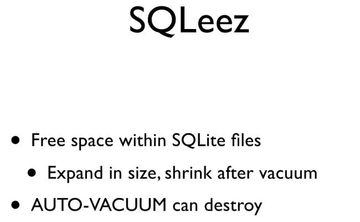
Alright, now what we’re going to do is run Python and try and remember the command line options that it takes. Okay, Projects, Anti-Forensics, SQLite – yes. So, what this is going to do is erase my ‘etc/passwd’ file, overwrite a portion of my disk, and…crash horribly. Okay, in theory now, what we have is a ‘cookies.sqlite’ file which has my ‘etc/passwd’ stored inside. And we can probably do strings.
Okay, what happened is rather than modifying the existing database I created a new database called ‘test.sqlite’ which you can see here, and it’s just being created now, honestly. If we run SQLeez with just this as the input, it will print out the contents.
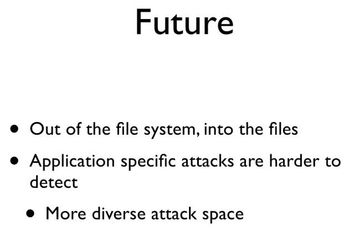
File formats, on the other hand, are pretty much a mystery. You can take an existing close to us application on Windows, reverse-engineer the file format that it uses for storage, do your attack against that – and it will never ever be found. Basically, attacking file systems is old hack these days; it’s not the place to go after anymore. You want to move into the application space. Once you’re at the application space, it’s a lot easier to do data storage.
So, my recommendation is to go for the stuff that I’m working on right now, such as to use the iPod database as a data storage mechanism. One of the reasons that’s a really cool way of doing it is that it’s very-very easy to erase, because when you plug your iPod into an iTunes computer, it will rewrite the database from scratch and erase all of the work that you’ve spent three nights working on and didn’t know that it automatically erases it as soon as it gets plugged in, which is a great feature for destruction because you can sit there, you see the cops coming, you plug your iPod in – bang, data gone! Goddamn!
Essentially, the idea that I’m suggesting to everyone is from these days on you should really focus on data contraception attacks: how you can stay in RAM longer; the less things that you can do to actually interact with a computer, the better; and also, move into the application space, go after file formats – that’s much more exciting than going after file systems.
Q & A
Alright, questions?
Question: How many real-world attacks have you triggered?
Answer: Actually, I didn’t trigger any. I didn’t do it on my main disk because I’m not that dumb. I learned this one when I used to do all my stuff on Linux. I only had to rewrite my source code twice from scratch. The thing is, file system code is actually very poorly written, because the assumption is always made that the only person who is writing to the file system is the kernel. And since you’re writing the code for the kernel, you can assume that anything that you read back is something that you wrote. So they don’t do a lot of error checking. I think they got hammered heavily with this about a year or two ago. But basically, the HFS+ code isn’t that bad, it’s kind of elegant. Most of the attacks that I’ve been doing – I don’t screw up pointers that badly – I write stuff out, something flushes over, and my data vanishes in between. And it’s very frustrating.
Question: What main problems do you encounter when doing anti-forensics?
Answer: There’re significant bootstrapping problems. You need to have a tool that allows you to access your hidden data store. But that tool cannot be hidden itself otherwise you can’t access your hidden data store. And if that tool isn’t hidden, then it’s basically like leaving the keys out next to the safe: no one can get in unless they know to look underneath the flower pot next to the front door – that sort of thing. So, there are problems with that. Most of the anti-forensics, as I understand it, is useful primarily as a post-break-in, so you break into a box and then you need to clean up to make sure that there’s less evidence that can be used against you, or used to track you down. That interests me a lot more than hiding pornography, for example.
The other thing is that most of the anti-forensics stuff here is not worth it, because you don’t actually need to do any of this to hide your stuff from a forensics investigator. The best stuff is: #1 – don’t get caught. If you do get caught, wait until you try and get a good lawyer. Generally speaking, all of the stuff, like the child pornography – they always go for the low-hanging fruit, they go for the easiest guys to find. Hackers that go for the low-hanging fruit – they go for the young kids who don’t know how to clean up after themselves, that haven’t developed all of the good habits of “wipe the logs, make sure no rootkit is running,” all that stuff. The people that they capture tend to be the low-hanging fruit because it’s easier for them to do that.
There’re various sorts of things that make anti-forensics as a specific region of study not very useful; like putting that dot in front of the filename on Unix – that still works, that is a very effective attack. And it’s going to continue to work for a very-very long time, because from an anti-forensics perspective your first objective is to not be detected. So, your adversary is not necessarily the forensics investigator; it’s the system administrator who has day-to-day interaction with that box. If that system administrator isn’t suspicious, then there’s not going to be an investigation. And if there’s no investigation, there’s no forensics officer to come and look at the file system. So, don’t piss of the sysadmin – and you don’t have to worry about hiding all of your stuff properly.
